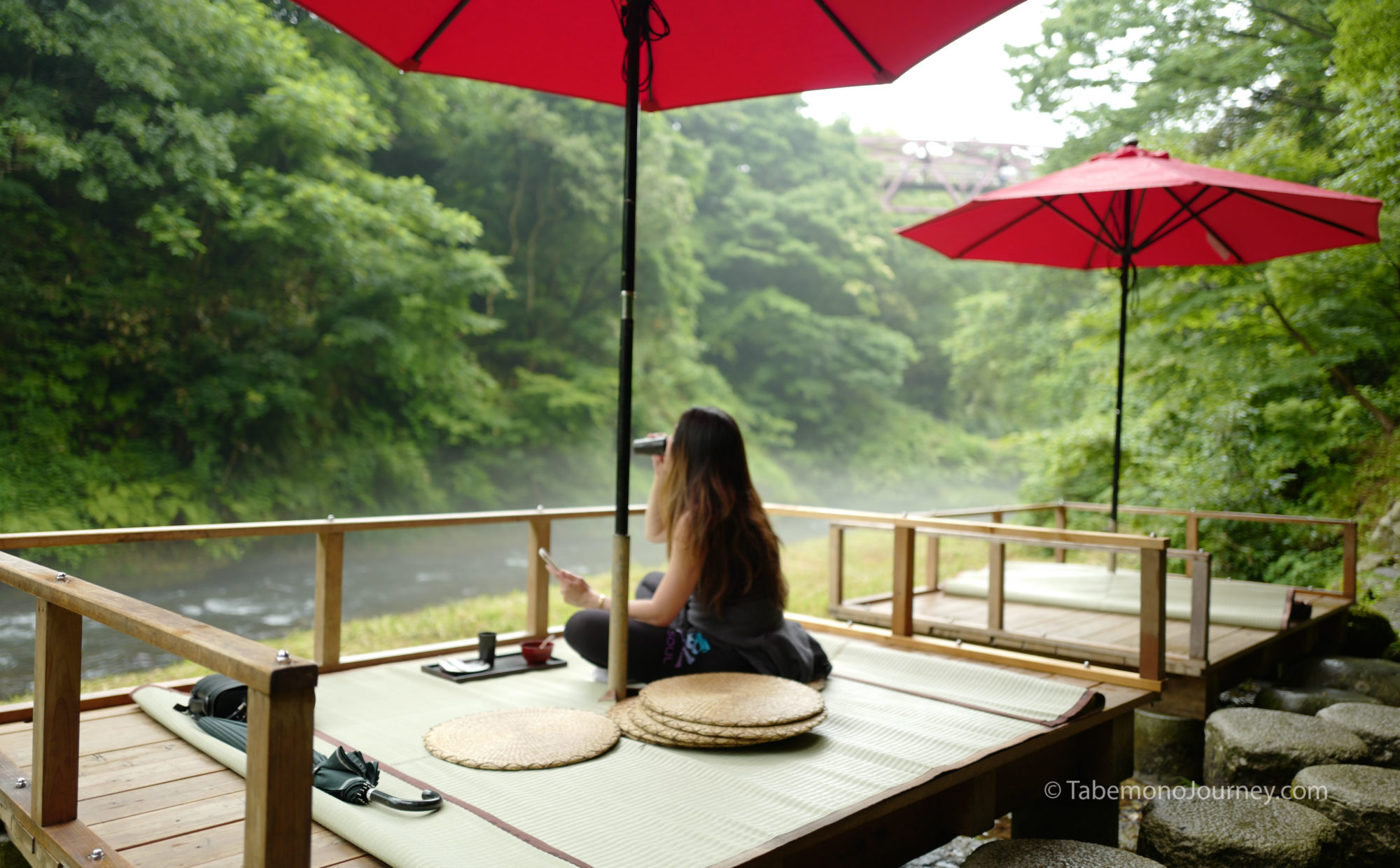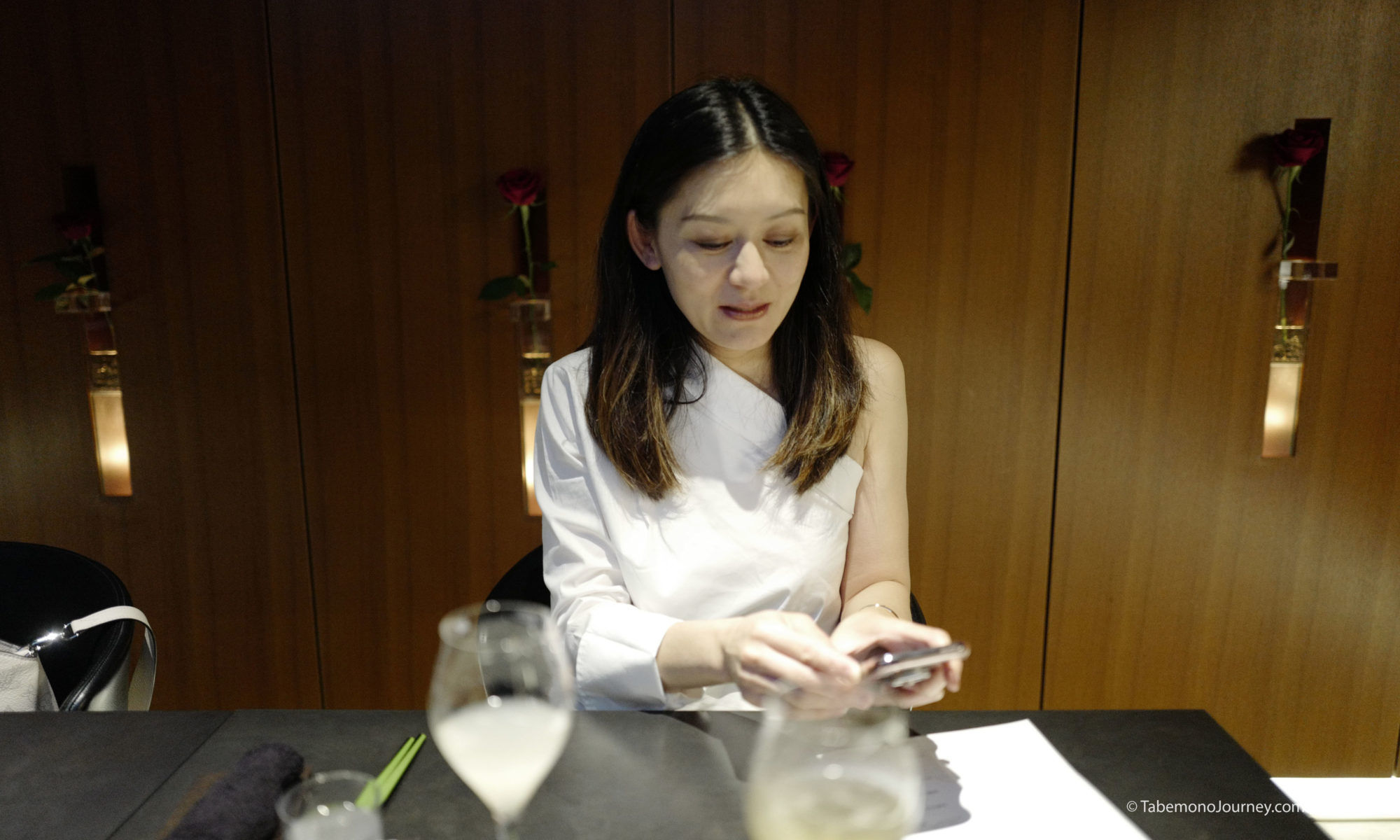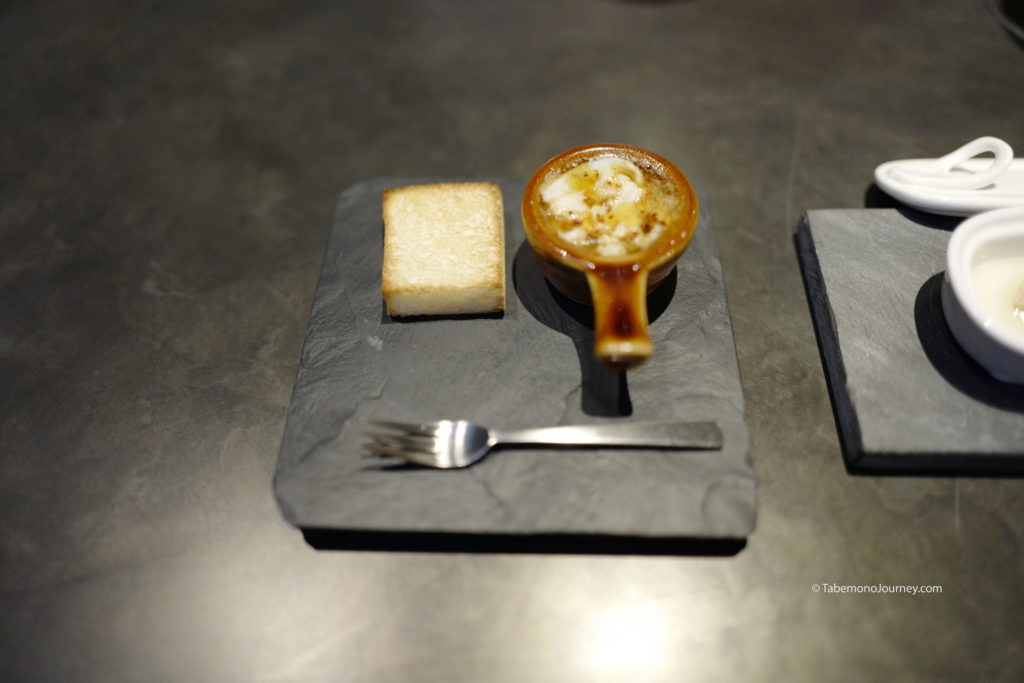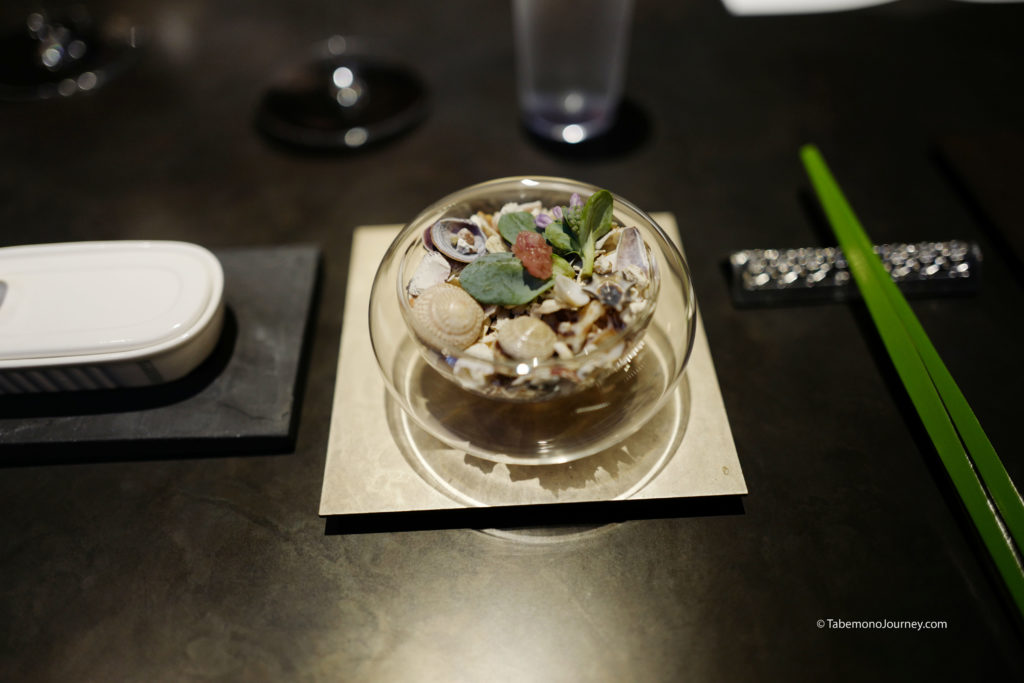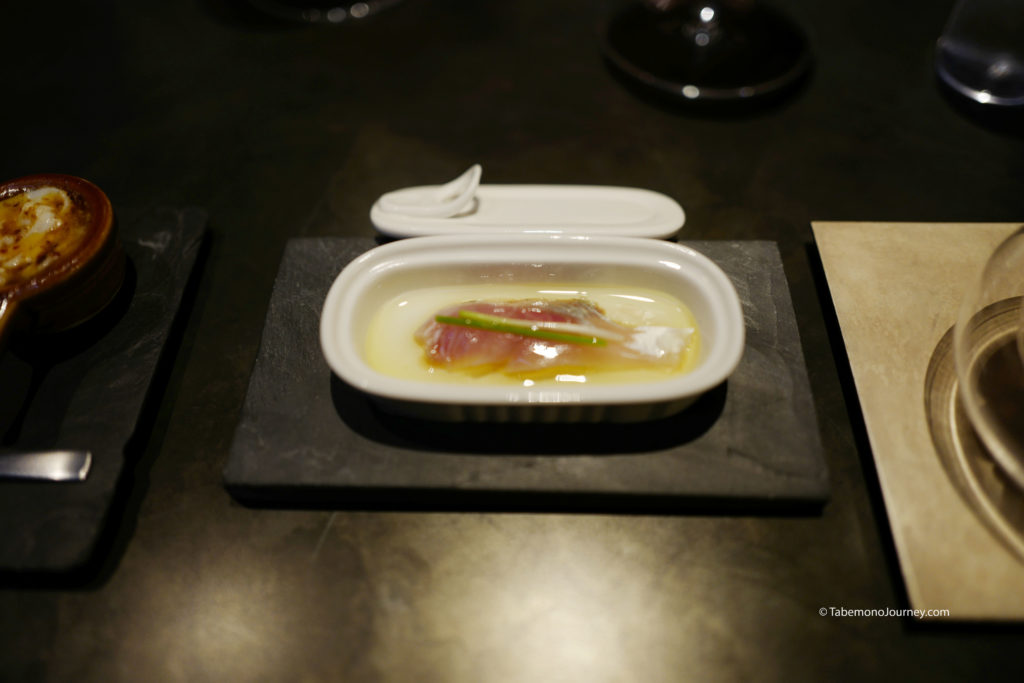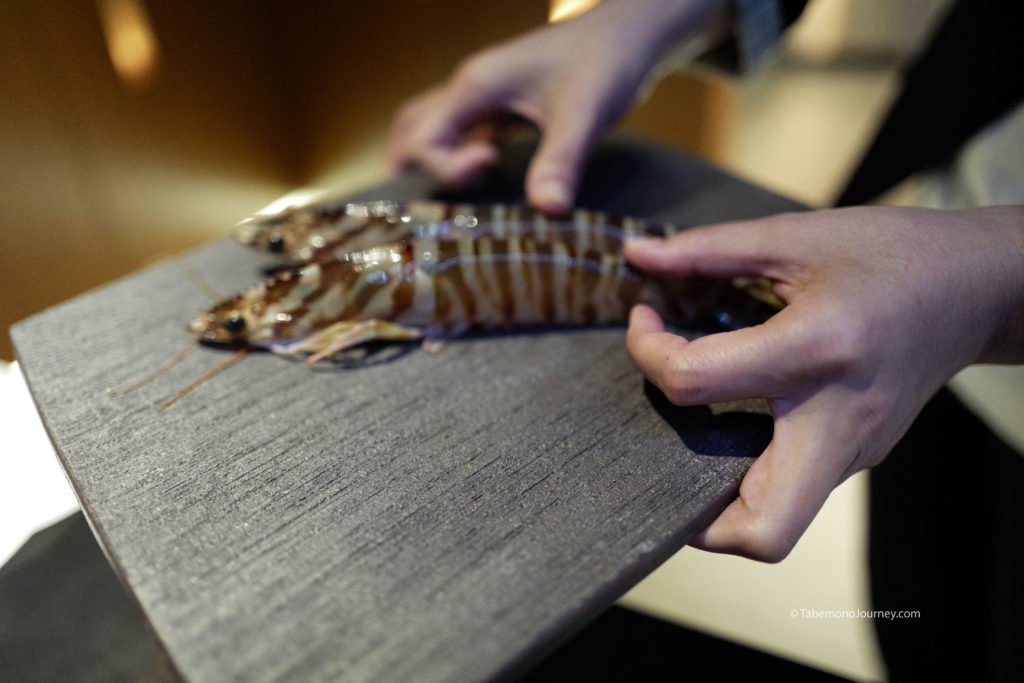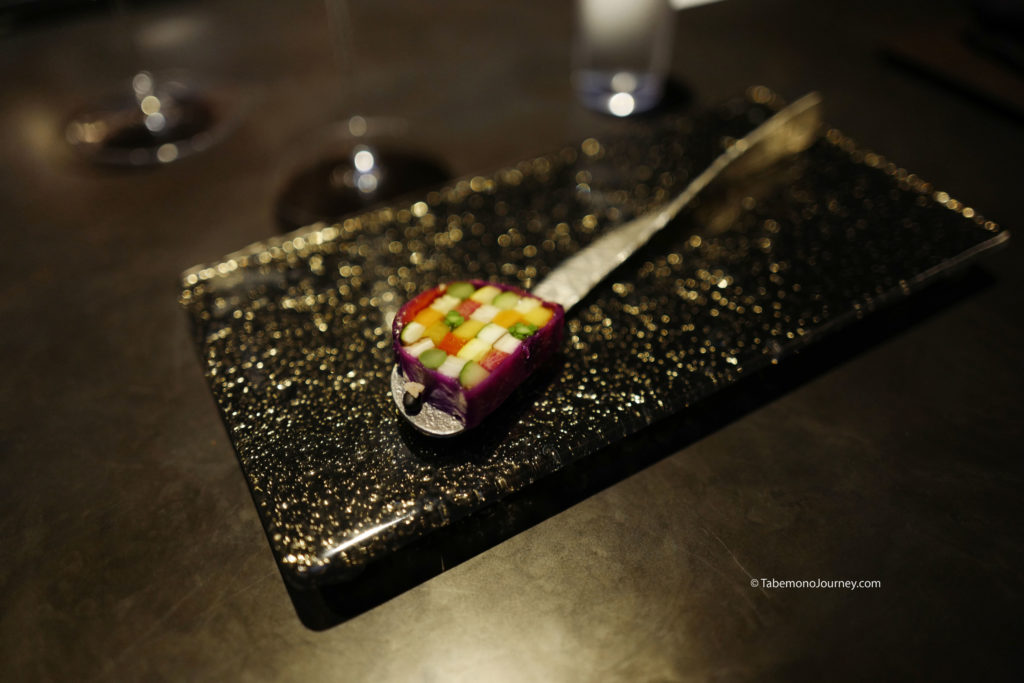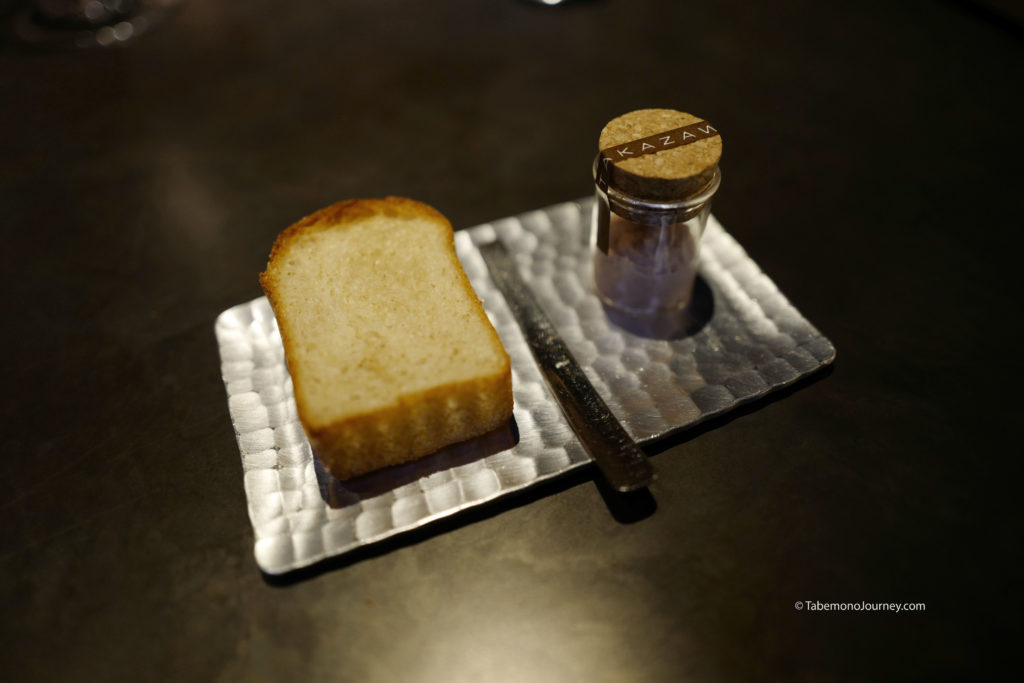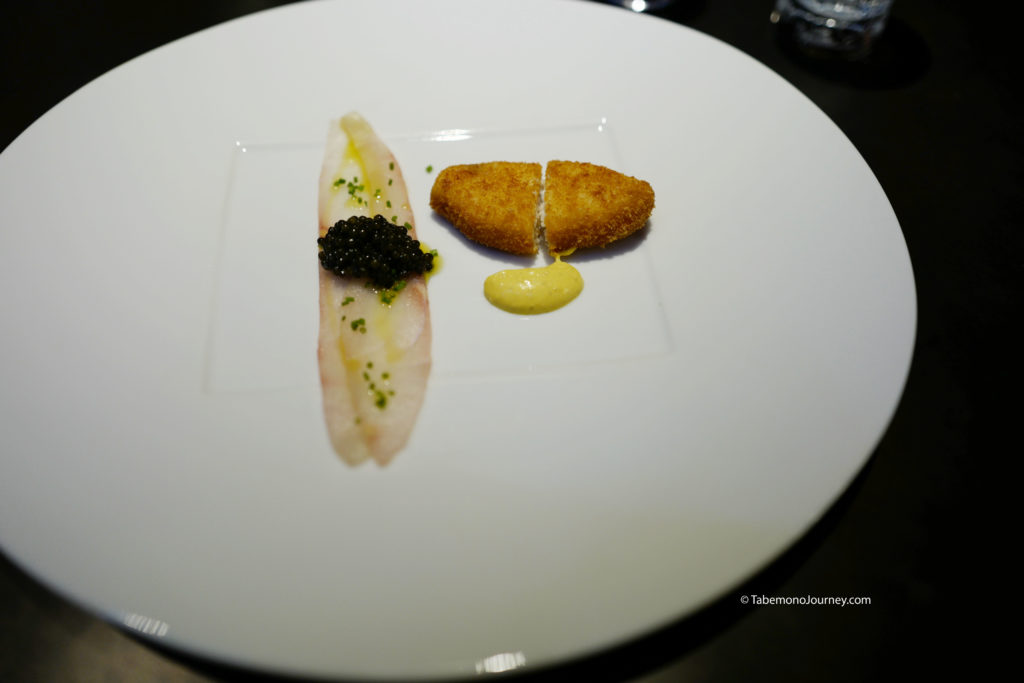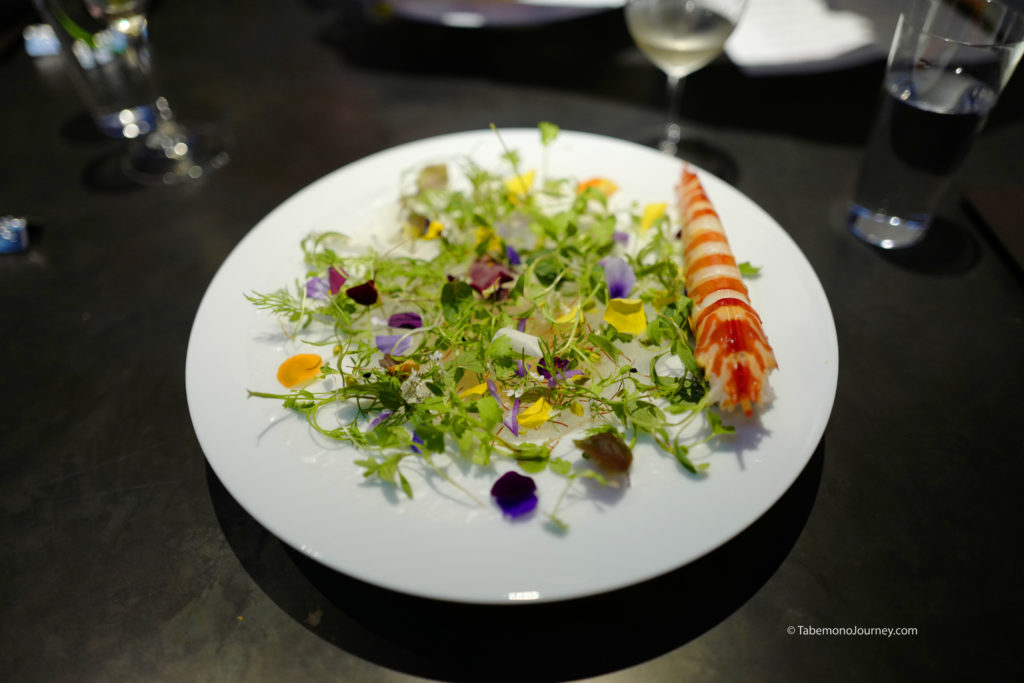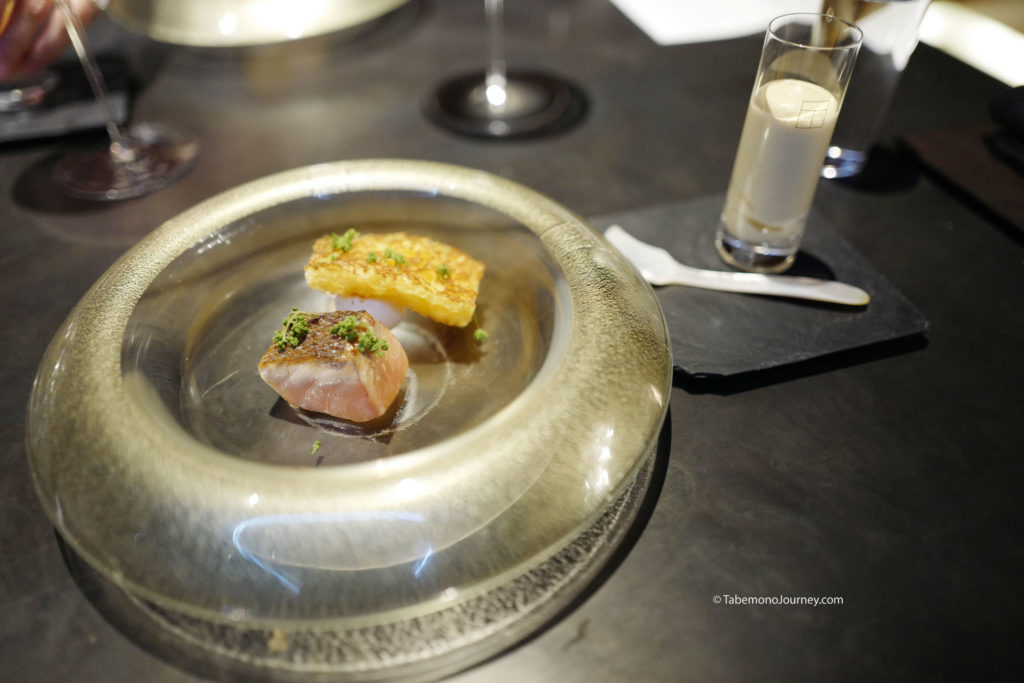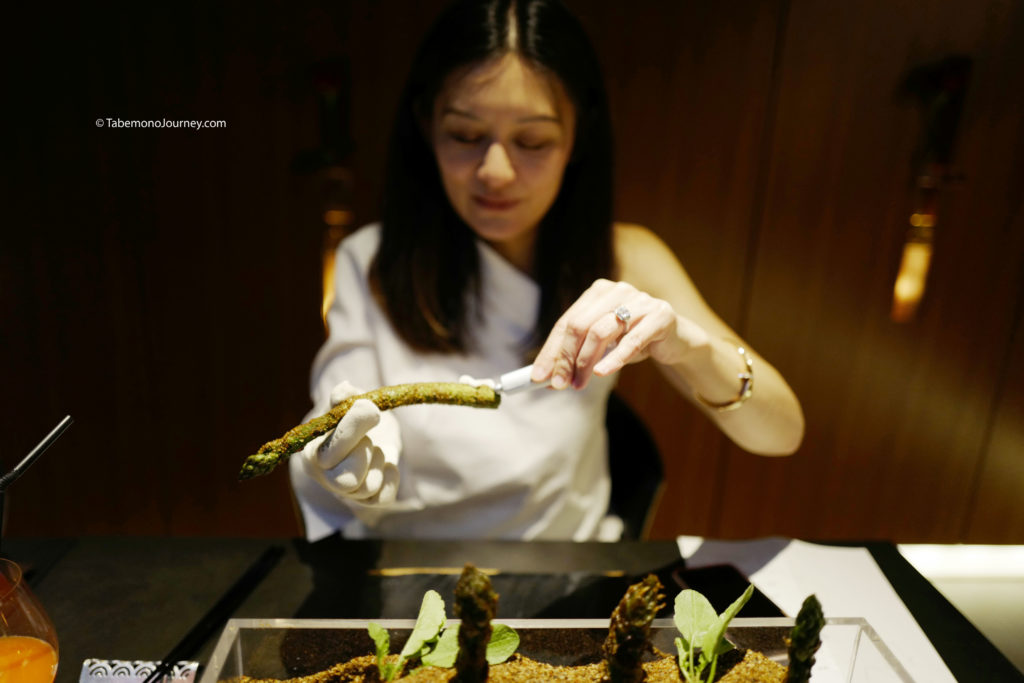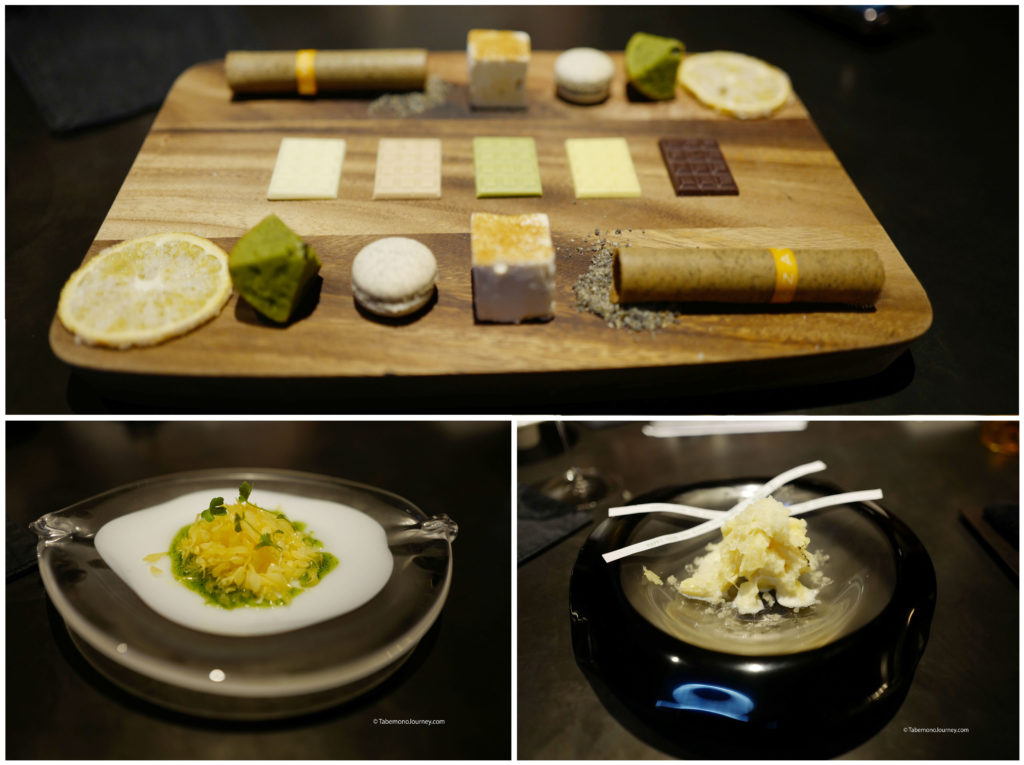My wife and I visited Japan in May 2018 to celebrate our wedding anniversary and our first stop for dinner was to Takazawa. Takazawa is a restaurant that is surrounded by the allure of exclusivity and secrecy. Seating only three tables and a maximum of ten guests a night, Takazawa serves fusion Japanese cuisine with a splash of molecular gastronomy. Chef Yoshiaki Takazawa originally opened his restaurant in 2005 and it was originally called Aronia de Takazawa. It was named after a little known fruit in Japan similar to a native American blueberry, but it was changed in 2012 to simply Takazawa. From their website, the name change was done to highlight the evolution of Chef Takazawa’s culinary point of view, where he focuses more on Japanese tableware, ingredients, techniques, and flavors. He prefers to call his style of cuisine simply Takazawa style, and it is definitely a unique experience from both a culinary perspective as well as how the overall dinner was orchestrated.
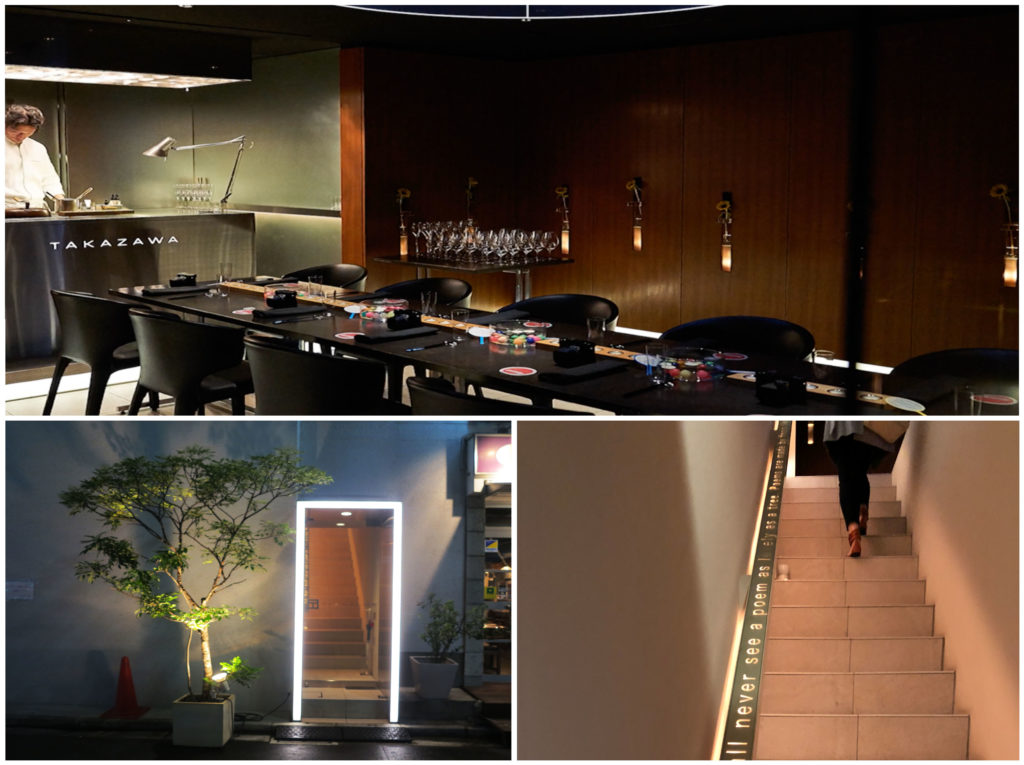
Takazawa is located in the back street of the Akasaka business district of Tokyo. The front entrance is a glass door with no signs. We had to ask a near-by attendant in the building next door to confirm we were at the right place. A flight of stairs with the “Trees” poem by Joyce Kilmer is elegantly etched onto the handrail and leads you up to a small square restaurant that is dimly lit to accentuate the intimate atmosphere of the restaurant. We were greeted by Chef Takazawa’s charming wife, Akiko who spoke fluent English and she led us to our table that had front row seats to the chef’s steel counter that serves as a stage as Chef Takazawa performs his culinary masterpieces. The layout of the small restaurant feels intimate and builds up the anticipation and suspense for our meal as we knew we were in for an amazing experience.
The first course was a trio of amuse bouche. On my right was a garlic olive oil cooked noresore, which are baby conger eel. It is cooked in the same way as the highly prized Spanish version of baby eel called Angulas. The toast served with the noresore was just as good as the dish it accompanied and we wished we could have more to pair with the baby eels.
In the middle in a bed of seashells is simply oyster leaf plant topped with a tomato like a marmalade. It’s a play on senses to have a plant instead of the shellfish be the focal point of the dish.
The last of the trio of amuse bouche was an olive oil marinated nisshin. Nisshin is herring and it was in peak season during the May month when we visited. It was in a playful sardine can-like dish.
Akiko brings by some giant live wild kurama-ebi to showcase one of our upcoming course. They were huge, rivaling the size of many of the high-end sushi restaurants where I have had this Japanese Imperial prawn.
Chef Takazawa’s signature dish is his ratatouille arranged in a bite-sized mosaic tile. Akiko explained that we needed to eat the ratatouille in a single bite, like how sushi is eaten so that we can enjoy the different flavors and textures of the various vegetables together. She also explained that there are over 15 types of vegetables used and each using different cooking techniques, to accentuate their individual color, flavors, and textures before being assembled.
Agu pork rillettes paired with another piece of that amazing toast was delicious. The Agu pork is premium pork from Okinawa that is slowly cooked and then shredded. It was rich and melted in your mouth like butter.
Swordfish was the focus of the next dish, served two ways. Called “Tasting”, you have swordfish thinly sliced into a carpaccio and topped with a drizzle of olive oil with citrus and a scoop of caviar. Katsu swordfish was the other preparation and it was served with a remoulade sauce. Probably one of the more normal dishes of the night, I surprisingly liked the carpaccio. Swordfish is a dense fish, and slicing it thin worked here as it melted in the mouth. I had thicker cuts in the states as sushi and did not enjoy it raw.
“Vegetable Parfait” was the name of our next course. It is a complex gazpacho with multiple tiers of ingredients. From bottom up were the following layers: tomato water, tomato gazpacho, Parmigiano Reggiano mousse, cubes of jelly and cucumber, caviar, and topped with a kale chip. We were told to mix everything together with the long spoon and use a straw towards the end to finish up the “dish”. Overall it was light and refreshing.
Remember the giant kuruma-ebi shown earlier? Here is it’s finished form, called “Spring” Roll, it is presented onto a beautiful bed of herbs and edible flowers “floating” onto of a rice paper wrap.
Chef Takazawa explains the dish to us and then rolls the kuruma-ebi in front of us. Taking his inspiration from the Vietnamese spring roll, goi cuon, this is perhaps the most expensive by best-tasting version I ever had. The kuruma-ebi is super sweet and meaty, and it’s even paired with an elevated peanut and sesame sauce.
“Powdery Dressing” was the focus of the next dish. I didn’t snap photos as the dressing was the focus on this dish. The dressing was a yuzu vinegarette frozen from liquid nitrogen and as it’s poured over the seasonal vegetables, would dissolve and coat our dish.
Our next dish was called “Light Egg Benedict”. It came plated with a dome lid where you can see smoke inside the lid. As the lid is slowly lifted, you can smell a smokey bacon-like aroma.
However, bacon is not present, but instead, we see a deconstructed “egg benedict” were the protein is Hokkaido salmon with its crispy charred skin. It is paired with eggs cooked three ways. There is a sponge cake-like egg (instead of a muffin) that tops a soft-boiled quail egg underneath. Finally, a hollandaise egg-white sauce is in the glass next to the dish that we can top as much as we want into our dish. It really is a lighter version than a traditional egg benedict.
The next course is a playful course called Takazawa’s farm (from his grandfather’s actual farm in Hokkaido). A large glass “planter” with spouting vegetables was presented in front of us. Gloves and a tube of sauce are provided as the course is meant for your hands. You pluck the asparagus or radish from the “soil” and use the tube of house-made truffle mayonnaise to smear the asparagus or radish. The soil is made of charred breadcrumbs flavored with garam marsala, caraway seeds, and tamari soy sauce.
You can see my wife having fun with the asparagus. It’s like putting on toothpaste on your toothbrush.
Our last savory course is interestingly called “Milk”. The reason why it is called milk as Akiko highlighted was that the Hokkaido calf is milk-fed right up until they are prepared and shipped. We call it milk-fed veal here, and the color is almost white in color, with a pale pink center. The veal tenderloin was very soft and tender. The veal is placed onto of a dollop of mushroom sauce speckled with milk foam and paired with crispy veal sweetbread and a puree of lily bulbs with more milk foam onto. It is finished off with fava beans and shavings of white truffle.
Dessert was another three course. I’m not much of a dessert person, but I liked how chef Takazawa’s desserts are not too sweet. The first of our dessert is called “Citrus Risotto” was really interesting and a nice play to the senses. The risotto is made from nitrogen frozen caracara orange pulp which melts in your mouth. The final dessert was house-made baked goods and house-made flavored chocolates.
Takazawa was an amazing dining experience. We enjoyed so many aspects of our night as the dishes were creative, whimsical, and so delicious. Takazawa used many high-end ingredients from different parts of Japan. Part cooking and part alchemy, Takazawa literally performed his culinary art with a precision and passion that enhanced our meal. The service and hospitality rivaled many of the high-end restaurants we visited. The one drawback is that the cost was similar to the pricing of many high profile concerts, but it was worth the experience on our special occasion.
Restaurant Info:
Address: 3 Chome-5-2 Akasaka, 港区 Tokyo 107-0052, Japan
Website: http://www.takazawa-y.co.jp/en/
Phone: +81 3-3505-5052
